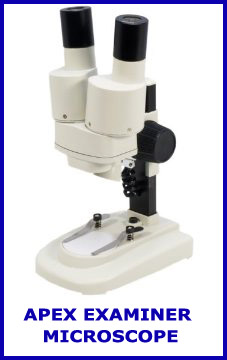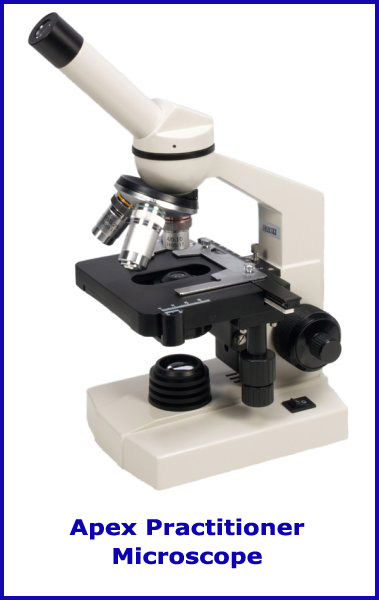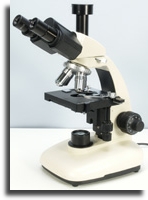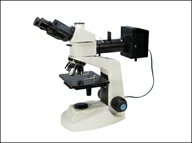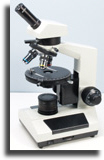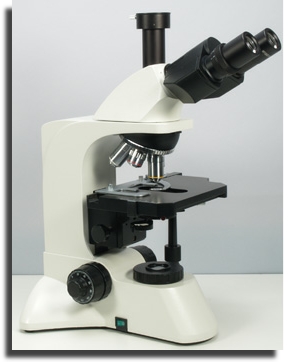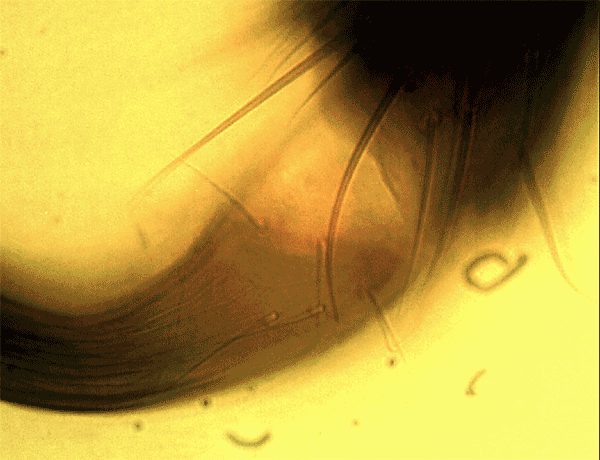Choosing and buying a Microscope
For fuller details on buying a microscope for the first time, try this!
Microscopy for everyone
You do not have to lay out a lot of money to take your first real steps into microscopy. Around a hundred pounds will start you off with a compound microscope, and less than forty pounds will start you off with a stereo microscope. Now, maybe you are thinking of buying one either for yourself or a youngster. The issue now is that with all the different choices available on Amazon, other Internet sites, different companies, even high
street shops, how do you know where to start and what to buy. So many things today are over marketed and don't live up to expectations.
I thought then to try and simplify the task for you.
Where are microscopes made: Nikon, Zeiss, Leica, Olympus, & Brunel?
Almost all the main western microscope manufacturers now use the cheaper labour and resources afforded by China and the Philippines. The large companies obviously try to take strict control of the quality of their products. You'll often find non-branded microscopes that readily look like high end expensive microscopes sold by Zeiss, Olympus etc. It's probably because they are the same microscope in parts, but their assembly, the
quality control, and the stream by which they are produced in the Chinese factory and flow out to end point of sell is completely different and often (on non-big-name microscopes) managed ineffectively. Russian microscopes, as far as I know, are still manufactured in Russia. {more info
here}.
Many small companies in the UK, Europe, and the USA import Chinese microscopes and then check every one before branding them and selling them. This often involves dismantling some and using parts to replace badly made or ill-fitted parts on other ones. They are effectively serving as an end of production line Quality Control unit.
In the UK, I recommend Brunel Microscopes (see footnote). I have been to their industrial unit and seen the care and attention taken to ensure all microscopes are sent out in good order. Their after-sales service is friendly and supportive.
Toy Microscopes
Many toy shops, and now - Internet web sites - sell cheap microscopes, often in a kit with specimen slides and eye-droppers. Most of these cheap microscopes are made of plastic or have plastic lenses or inferior glass ones. They have been produced and marketed to seize the eye and create an illusion that your child can have one of these and see what they see in all those fancy science movies and magazines. They won't though. All they will see is a blurred and fuzzy image which will forever put them off the idea of
using a microscope.
If you wish your child to become enthused and excited by trying a new hobby like microscopy, it is worth making a proper investment. A good basic stereo microscope can be purchased for less than £50.00.
What Is the person's age who will be using the microscope?
Age 9 or less
Young people below the age of say, ten years old, will struggle to use a high powered compound microscope. It is far better to buy them a low powered stereo microscope (two eye tubes) until they are slightly older and therefore more patient with setting up a high powered instrument. A 20x stereo will provide many hours of fun-learning with minimum fuss and with little or no attendance by an adult. A stereo is ideal for looking at tiny flowers, insects, hairs, petals, and household items like sugar,
seeds, toothbrushes, biro tips, etc.,
A stereo provides a real three-dimensional image, which for a young person is more readily understood than a flat non-3D image obtained from a compound microscope. It is best to have a stereo with a built in light to shine down onto the subject being observed. Ideally, this should be an LED lamp (cooler) and powered by batteries in the base of the microscope.
If you are in the UK or EEC, the following Brunel and Apex microscopes would be a good choice for you.
And yes, I am biased towards their products because I have great insight into their practices and procedures. You can benefit from that.
|
|
If your child is very young, I would strongly recommend you buy the one on the left. If you can afford to and your child is closer to 10 years old but not yet 10, I would also purchase the one on the right. If your child is older, please see further down the page. |
|
|
The Apex Examiner Microscope |
The Apex Learner Microscope |
Outside of these countries, you might try to source similar microscopes from reputable sellers if the cost of buying from the UK and the associated shipping charges push the cost up too high.
Age 10 to 14
Young people in this age range would also enjoy the low power stereo, but may possess sufficiently high curiosity to want to look further into the fascinating range of microscopical creatures and objects which form part of our lives on planet earth.
Yet again, unless they are going to get very deeply into microscopy as a hobby or because of a desire to eventually study and work in a related field, it is best to choose a student compound microscope. Ideally, it should have as a minimum, 3 or more objective lenses on the turret, a sub-stage condenser and Iris Aperture, an under-stage light with a control to vary its intensity, a movable stage and caliper with x and y axis moment, and coarse and fine focus controls. The maximum magnification which is the eyepiece
lens magnification x the objective lens should allow magnification up to 800x. Higher levels of magnification are possible but invariably, the higher you go, the more you need to be aware of techniques such as oil immersion, and phase contrast microscopy to get the best view. Most people between ages 10 to 14 are unlikely to wish to get involved with this degree of sophistication. The body and most of the attached body parts should be made of metal and the base should be sturdy and heavy.
If you are in the UK or EEC, the following Brunel and Apex microscopes would be a good choice for you. The Apex range can be purchased via Amazon.
|
|
Both these microscopes are suitable for 10 to 14 year olds. The left hand one - The Examiner - would be the one I would buy for children younger than 10 years old. But, children and their abilities at different ages vary enormously, so you must be the judge on whether or not your youngster would benefit more from the one on the right. If you check the specifications and wish to buy a similar microscope from another supplier, all well and good. I use both these microscopes and they work well and are excellent value for money. |
|
|
The Apex Examiner Microscope |
Buy these direct from Apex here: |
The Apex Practitioner Microscope |
| An advantage with buying these two microscopes is that towards Christmas this year 2013, we will be launching a monthly video program on this site to teach youngsters how to use their microscopes and what to go out and collect to see. I feel this aspect has been lacking for a long time, and therefore I am putting the resource into place. mol | ||
Age 15 and upwards
A young or mature adult may still benefit from the student range above. Invariably I use a student microscope because my own interests are not particularly specialised. However, maybe a person has already become immersed in microscopy study and wishes to move to a more sophisticated level. I would advise though, for anyone starting off, to see how they get on with a student microscope first.
Only if you wish to specialise in study of minerals or metals (normally a commercial and industrial pursuit), should you consider the microscopes in the central box below...
|
|
These two microscopes are ideal for a wide range of study areas but are best for biological study. If you wish to study minerals or metals, a specialised microscope would serve you better .SAMPLE PRICE: £600 + |
|
|
SAMPLE PRICE: £300 |
SAMPLE PRICE: £450 + |
SAMPLE PRICE: £937.50 |
Once you have your microscope, there are many prepared slides you might wish to see. These slides vary in quality and are often made in India, China, and in the west. Often, very well made slides are laboratory standard but can be very expensive. For young people, a set of slides with medium quality preparation is suitable and affordable.
Here are some sets showing prices and what they contain: slide-set information
What will I see with these microscopes
|
Since I only own these two microscopes, I can only give you an idea of what you can look at. |
|
|
||||
|
||||||
As I say, I really didn't put much effort into the image quality so, using a good camera and preparing the slide (cleaning it) and the lenses
(cleaning them, mine are a bit dusty), you'll achieve much sharper images. I really wanted to give you an idea of sizes. The entire specimen is less than an 1/8 inch long and the claw is about an 1/8 of that again. So what you see above represents approx 1/64 square inches.
Also, when you go to higher levels of magnification (40x objective) you can only focus on a section due to a narrow depth of field, so you have to refocus say to see the hairs, and refocus to see the leg on which the hairs extend from. Hence the animated gif made from four different focus points.
So... let's have a look at the stereo microscope.
|
|
|
|
|
|
On some of these I used a small LED torch shone from the side in addition to the microscope light to obtain oblique lighting and show more detail. But I think you can see roughly what to expect from these low priced microscopes which I believe in cost, value, quality and usefulness are ideal for most young people.
Video cameras which pop into the eyepiece and connect to your computer are also available quite cheaply. And if you own an SLR, attachments are available to use the superior sensor chip in the camera to directly film or photograph specimens with both these microscopes.
Children using microscopes
There are very few guides to using a microscope
and collecting things to see and study. However, I am going to address that by opening a very new comprehensive section aimed at pre-teenagers on this site. We will be releasing online video tutorials, books, and information magazines structured to guide youngsters into and through the extraordinary fun science of amateur microscopy.
So... get some pennies saved up and buy your youngster a microscope this Christmas. Then you can tune into our new permanent section and set them free to explore in our safe hands.
mol smith
Micscape Editor's footnote. The microscopes recommended by the author are supplied by
Brunel Microscopes, the sole sponsor of the parent website Microscopy-UK, but the
content of the magazine Micscape is not affiliated to the sponsor or other
supplier. A contributor, as here, may wish to discuss and link to a given
dealer's models with which the author is familiar but the reader can contrast and
compare models offered by other UK suppliers or those in their own country. For overseas readers considering a purchase, the additional cost of shipping and import
from the UK is not advisable if comparable models are available
locally from reputable dealers. We encourage any potential contributor to Micscape to discuss and compare models from any
maker / dealer with which they are familiar.
